Help floods in after Sister’s sailors SOS
May 13, 2020An overwhelming response to seafarers’ appeal is sweet.
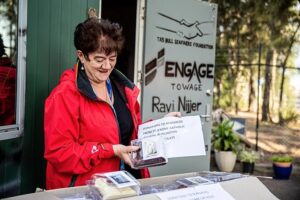
Donations from across the country and gratitude from around the world have been flooding in for the tireless work being done by a Sydney religious sister supporting the seafarers visiting our shores.
Known as the “angel of the waterfront”, Sister Mary Leahy has spent the past 20 years helping those who earn a living on the seas and said she has never seen conditions so desperate.
Trapped on what has been described as “floating prisons”, many of the world’s 1.6 million seafarers already at sea for up to nine months have no real sign of when they will be able to return home due to the COVID-19 pandemic.
The quietly spoken Josephite sister issued an urgent appeal for personal hygiene products including shampoo, body wash, toothpaste, deodorant and razors, as well as knitted beanies and chocolates to put together care packages for the sailors, and admits to being overwhelmed by the huge response.
However, it’s the messages of gratitude from the exhausted seafarers globally that has made her even more committed to providing not only practical but spiritual support at this time of great need…
You’re invited to continue reading on The Catholic Weekly website below:
Click here to continue reading
Debbie Cramsie
The Catholic Weekly
So Small a Beginning: Part 2
May 8, 2020Sr Marie Foale speaks about the beginnings of the Institute of St Joseph for the Catholic education of poor children.
She believes that as a young Josephite growing up, she had a sense that one day Mary MacKillop and Julian Tenison Woods had made a spontaneous decision to found an order.
Reflection on Mary MacKillop
Paul Gardiner sj writes about Mary MacKillop’s experiences of being away from her family, friends and Sisters of Saint Joseph while on her overseas journey.
 The physical elements in this poor health would have been reinforced by worries about her mission, the mixed success of her begging, the unpleasantness of cold refusals, uncertainty about Roman approval of the Institute, separation from those she loved, and concern about what was happening in Australia. Anxiety about travel arrangements, changing trains, long waits, the tedium of the travel itself, uncertainty about accommodation are things even a person in good health can find something of an ordeal.
The physical elements in this poor health would have been reinforced by worries about her mission, the mixed success of her begging, the unpleasantness of cold refusals, uncertainty about Roman approval of the Institute, separation from those she loved, and concern about what was happening in Australia. Anxiety about travel arrangements, changing trains, long waits, the tedium of the travel itself, uncertainty about accommodation are things even a person in good health can find something of an ordeal.
Kindness and generosity touched Mary in a way she never forgot. She took care to keep in touch by letter with the various priests who had helped her during the ‘sweet string of Providential events’ in Scotland. On the other hand, she was sensitive to the coldness of some she approached for assistance. She did not take it as a personal affront but could not help reflecting that it was the rich, not the poor who refused her: ‘No welcome for the beggar from the rich ones from Edinburgh.’ She was more concerned about their deafness to the teachings of their religion than about being rejected. But it would be wrong to say that people with money never helped her. The McDougalls, Mrs Vaughan, Lady Gordon, and a number of people she met through them, became not only friends but also good benefactors.
Extract from ‘Mary MacKillop: An Extraordinary Australian’ by Paul Gardiner sj (1993) p. 144. E J Dwyer Pty Ltd Australia.
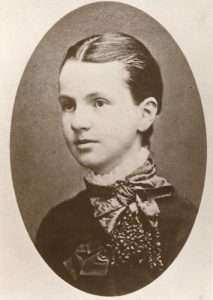
While Mary’s concerns did not revolve around social distancing or imposed isolation, she keenly felt the separation from the Australian scene and those she supported and loved.
Mary was only thirty-one when she undertook this enormous challenge and was recognised as the woman in the black dress. This journey was a major ordeal for Mary to cope with alone. The scenario Gardiner has painted for us is one of a strong and heroic woman in isolation.
- The list of challenges Mary faced alone is a lengthy one. During this time of social distancing, is there something in Mary’s story that rings true for you as a comfort?
- Mary understood what poor health was like. In times of worry, anxiety and illness how did Mary seek support? What gives you strength?
- Many of us cannot physically be with our loved ones. We are fortunate to have many forms of social media to assist us to make contact. Is there a person who comes to mind when you reflect on someone needy or with few friends?
Let us reflect on Mary MacKillop’s outstanding courage and heroism as we pray that we may model the tenacity and faithfulness that Mary lived so strongly.
Michele Shipperley rsj
Photo of Vatican titled ‘Architecture City Travel’ by Paula11767 obtained from Pixabay. Used with permission.
A Day in the Life: St Anthony’s Family Care Worker
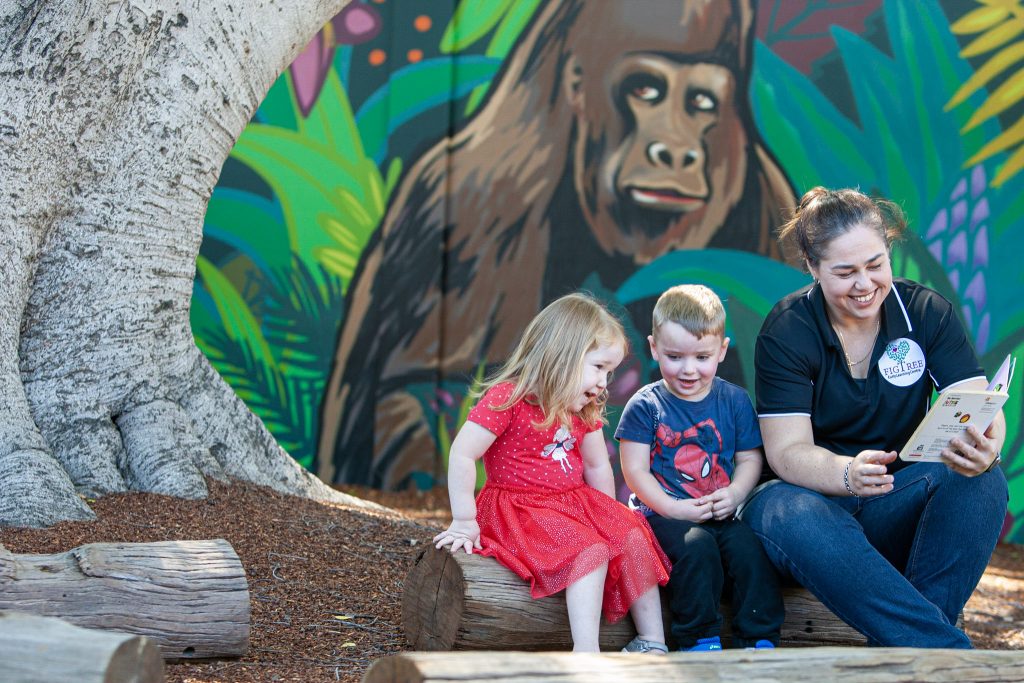
Times of change at St Anthony’s Family Care
When I first stepped foot into St Anthony’s Family Care in Croydon, NSW almost 25 years ago, I could have never imagined how the organisation would change my entire life.
What does Mary MacKillop Have to Say to us These Days?
The over-arching news these days concerns the impact of Coronavirus (COVID-19) on each of us.
Panic abounds as a result of a plethora of notices from government, local agencies and many others. Frequently, there has been pandemonium in shopping centres where an atmosphere of virulent fear results in panic buying and hoarding. Often panic leads to a focus on someone or something inane. In this pandemic the panic lead to shortages of goods, most surprisingly toilet paper. Who would have thought that the search for this particular, usually insignificant, item would have called forth the best and worst in so many people! In addition to dealing with shortages, there has come into being serious limits to our right to move freely, to go about normal business. In varying degrees, we are forced to live in isolation which engenders fear as well as pain. Conversely, isolation can breed its own joys and creativity.
Easter week reminded us powerfully of pain, isolation and fear all embodied in the women who went to the tomb. The Angel told them “do not be afraid!” Their pain gave way to hope and, later, joy in knowing that Jesus had risen, was alive and had visited them.

I was drawn to read again the excerpts from Mary MacKillop’s diary from August to mid-October 1873. Mary had been in Rome to endeavour to have the Constitutions approved. The revised Constitutions were eventually completed with the assistance of several priests and sent to Pope Pius IX for approval. It was expected that the process would take quite some time. The heat of Rome had been burdensome for Mary who attributed much of her frequent illness to it. Her fledgling congregation was uppermost in her mind together with a deep desire to obtain materials for the schools, learn about the methodology in Germany and, perhaps, find some young women to join her. On advice, she decided to leave Rome, visit some schools and make her way to London depending on friends and the Providence of God to provide the means to do so.
On August 1 she set out on a journey that was truly formidable in that era. She left Rome by train and visited the Holy House at Loreto spending two days there. She then travelled to Bologna where she arrived at midnight, stayed in the station waiting room and left at 3.00am for Verona arriving there at 9.00am. She spent that day also in the waiting room and left at 3.30pm for Trieste where she arrived at 6.00am next day.
The Convent, where she hoped to spend the day, could not accommodate her necessitating her to go elsewhere. Compounding her dilemma was the fact that she did not have sufficient money to complete the journey. That afternoon a kind lady took her to Rev Baron von Obercamp from whom she borrowed the money to continue her journey. She left Munich at 6.30pm to catch the train to Coblentz where she arrived at 9.00am next morning. She remained at Coblentz for a week “with the kind sisters” visiting schools, noting teaching methods and obtaining school materials from suppliers. Satisfied with her experience there, Mary set out to make her way to Dover to connect with friends in London. As was customary when crossing borders there were custom checks. At the Belgian border, the train stopped at Verviers where she had her bags examined. Being alone and unfamiliar with the station, she took the wrong train and found herself in Brussels. Mary wrote, “after a weary journey got at last to Ostend about 9.00pm. Had to stay the night in the Hotel.” Next morning, she caught a steamer to Dover and then the train to London to join friends – friends who spoke her language and cared for her, thus somewhat alleviating her feelings of isolation…
Please continue reading below:
Read the whole article here (PDF)
Map of Mary MacKillop’s Journey from in 1873 (PDF)
Maria Casey rsj
Building a Positive Future: St Anthony’s Croydon
St Anthony’s Family Care in Croydon NSW has, for over 60 years, been supporting the local community.
At St Anthony’s Family Care, we have achieved our support to the local community through a range of services focusing on the needs of children and families. Our services have changed with the years, but we have always remained true to our mission and to following in the footsteps of Mary MacKillop. Our primary services today, centre around children with disabilities and particularly children with Autism Spectrum Disorder (ASD).
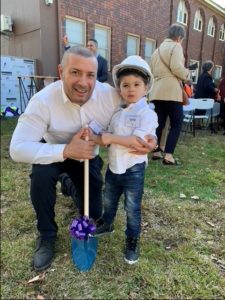
After operating from a site which is close to 100 years old, our buildings were tired, required significant maintenance and were no longer fit for purpose. After many years of planning and considering various options, the decision was made to construct a new accessible and purpose-built village. The facility was designed to consist of an 86-place inclusive Early Learning Centre, three houses for children with disabilities for short term accommodation, an Activity centre for children with disabilities and administration facilities. The new and expanded village would enable St Anthony’s to support a greater number of children to reach their greatest potential.
Many of us know a family member, friend or neighbour, whose life has been touched by a person with autism. Through our site re-development project, we have met a lovely family who we have been able to support through their new and unexpected journey into the world of ASD.
In September 2018, St Anthony’s Family Care engaged Anthony Panzarino as a Project Manager for the re-development. Here is his story ….
To learn more about our services, the families we support and our very exciting site re-development, visit our website.
Joanna Najdzion
Chief Executive Officer
Ecological Grief and Our Response
In Australia, the year 2020 began with every state and territory in our country alight in the most terrifying of circumstances.
Between November 2019 and March 2020, it is estimated 18 million hectares have burned throughout the country. The impact of these fires is far-reaching. From smoke filled cities, towns, beachside communities and beyond, thousands of people had their health compromised due to the heavy levels of smoke penetrating far beyond the areas of the fires, causing anxiety, fear and genuine health concerns. It is estimated that over 1 billion animals were killed, almost 3,000 homes were destroyed and at least 34 people were killed as a direct result of the fires.
 These figures alone provide a glimpse into the layers of grief and loss that the country as a whole is experiencing as it wakes up from this unprecedented and surreal unfolding of life that is traditionally a time where Australians relax and unwind with family and friends and prepare for the coming of a new year. Normally we expect to see images of relaxed and easy-going Aussies sprawled across beaches with food and family, however this year’s images showed people distraught and confused, trying to make sense of the senseless situation they found themselves in.
These figures alone provide a glimpse into the layers of grief and loss that the country as a whole is experiencing as it wakes up from this unprecedented and surreal unfolding of life that is traditionally a time where Australians relax and unwind with family and friends and prepare for the coming of a new year. Normally we expect to see images of relaxed and easy-going Aussies sprawled across beaches with food and family, however this year’s images showed people distraught and confused, trying to make sense of the senseless situation they found themselves in.
Prior to the bushfires, Australia was already battling growing drought conditions, which undoubtedly added to the ferocity and lethal consequences of the fires that tripped into the drought affected landscape. On the back of the bushfires, Australia, along with the rest of the world, is now grappling with a pandemic, unlike anything that we have experienced for generations.
If climate change was a remote, random nightmare before the fires, these events have certainly sharpened the focus of our plight, bringing the reality of our predicament into perfect view.
How do we respond to what we are seeing and experiencing in relation to our environment? There are many ways that we need to be responding at this time, however one of those ways is often overlooked, in the same way it is overlooked in other areas of our lives. That is, to grieve. To grieve both what has already been lost as well as what we continue to lose – the environment as we have known it. Many are referring now to “ecological grief” in recognition of the loss of our environment as we have known it and the far-reaching consequences of an ecology out of balance.
 Grieving is confronting, painful and life changing whenever our losses are significant. I can’t think of a more significant loss than the environment as we have known it as well as the implications for these ongoing losses which moves us into the deeper and more penetrating questions of how we survive in the light of the environmental changes we are experiencing. The losses we are experiencing are not just the physical absence of beauty and place as we have known them. The losses speak into the very essence of how we sustain human life safely in the places we call home…
Grieving is confronting, painful and life changing whenever our losses are significant. I can’t think of a more significant loss than the environment as we have known it as well as the implications for these ongoing losses which moves us into the deeper and more penetrating questions of how we survive in the light of the environmental changes we are experiencing. The losses we are experiencing are not just the physical absence of beauty and place as we have known them. The losses speak into the very essence of how we sustain human life safely in the places we call home…
Please continue reading below:
Mandy Cox,
Good Grief, Counselling & Supervision Services
Photo: Therapist comforting patient by Polina Zimmerman from Pexels. Used with permission.
Coronavirus – Impact on International Students
May 7, 2020The onslaught of the Coronavirus has caused much pain, suffering and hardship to Australians and people all over the world.
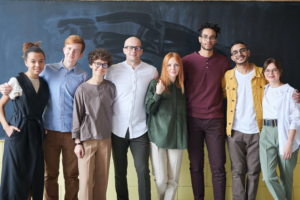 During this time of fear and uncertainty we appreciate the Australian and New South Wales (NSW) Government’s efforts to stop the spreading of this contagious and deadly disease through social distancing and isolation. This has however, resulted in the loss of many jobs. The impact of this situation is causing much devastation among vulnerable International Students. Many have found themselves unemployed and, therefore, left stranded and helpless during this time of uncertainty “feeling defeated by this unknown enemy.”
During this time of fear and uncertainty we appreciate the Australian and New South Wales (NSW) Government’s efforts to stop the spreading of this contagious and deadly disease through social distancing and isolation. This has however, resulted in the loss of many jobs. The impact of this situation is causing much devastation among vulnerable International Students. Many have found themselves unemployed and, therefore, left stranded and helpless during this time of uncertainty “feeling defeated by this unknown enemy.”
As far as is known 700,000 students attend Australian Universities and Tertiary institutions. Thousands are stranded with no safety net during this pandemic. The article from The Guardian on Sunday (‘We feel abandoned’: international students in Australia facing coronavirus alone) highlights the plight of these students. One student speaks of having to pay fees and bills while trying to live off her limited saving. She speaks of her disappointment with the lack of any moral support from the Australian Government.
According to Mr Baid, (University of NSW Postgraduate Councillor), many are worried about their courses or capacity to survive and stay in Australia.
Even if they wanted to, it is impossible for some students to return home because of the ‘lockdown situation’, inability to travel and/or the lack of funds. I have also been told that some have skipped meals, and many have asked for assistance from a Foodbank in Sydney.
I have spoken to all three students who were interviewed, and I can also verify what they have said from my own experience and contact with International Students, in my ministry with Trafficked Persons.
International students have contributed much to the social and cultural fabric of our Australian society. Moreover, International Students, through their fees to Educational Institutions contribute $39 billion to the Australian Economy. In addition, they further contribute to the Economy through their living expenses, rental payments and tax payments.
On 22 April 2020, in recognition of the contribution of the 26,000 Temporary Visa Holders, including students who have lost their jobs due to the Coronavirus restrictions, Tasmanian Premier Peter Gutwein announced that a $3 million support program had been established for those who are experiencing hardship and income loss. We commend Premier Gutwein who said we will “not turn our back on temporary visa holders” in Tasmania.
The South Australian Government has also announced a $13.8 million International Students Support Package to which all International Students enrolled and living in Australia are eligible to apply.
Since then, Victoria and Australian Capital Territory have also promised support for International Students.
NSW and Queensland readers may be able to influence the decisions of their Governments, if they were to write to the State Premiers and Opposition Leaders, urging them to adopt an appropriate program to support these International Students.
Margaret Ng rsj
Image: Photo of people standing near blackboard by fauxels obtained from Pexels. Used with permission.
